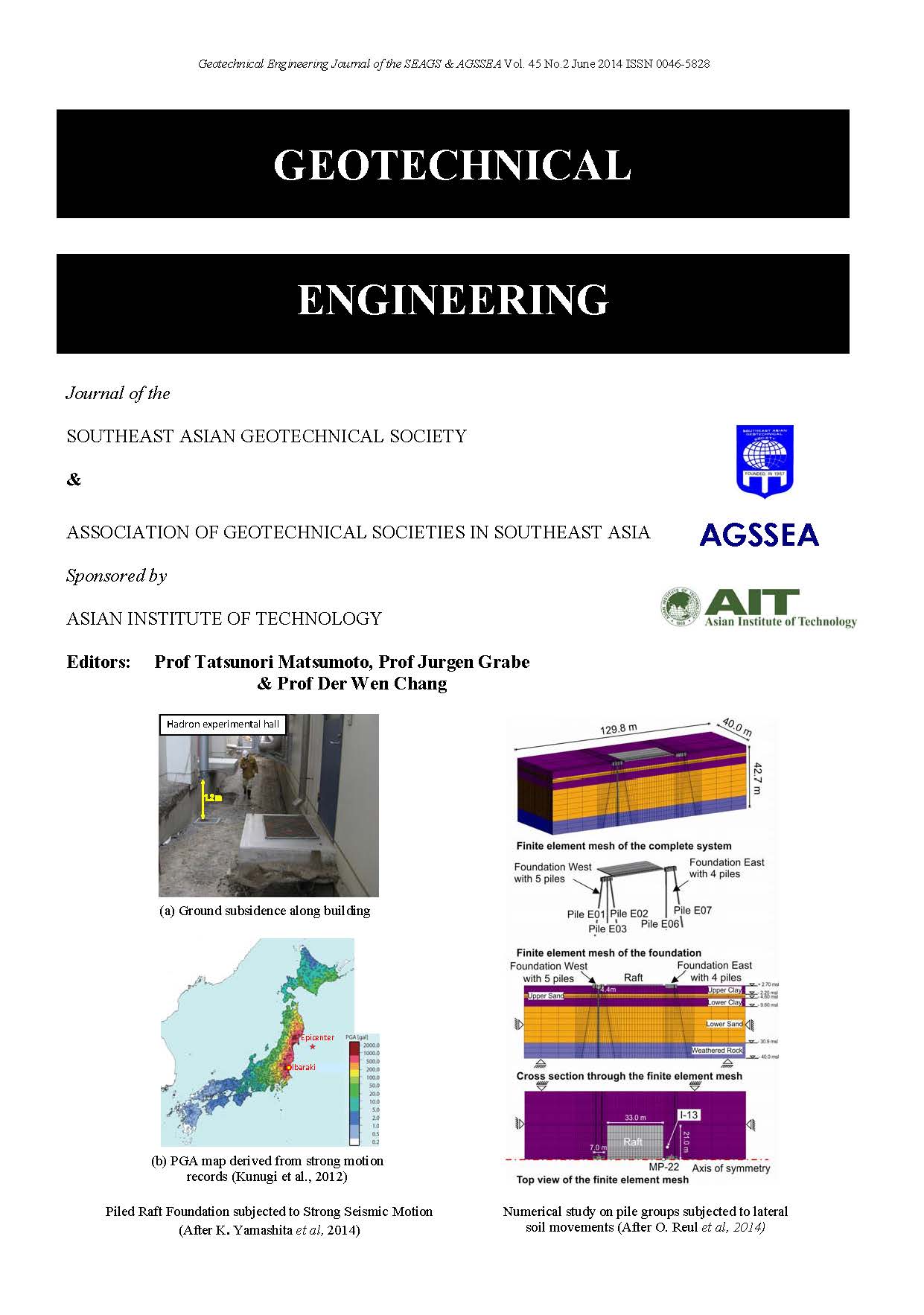Numerical Simulation of an Energy Pile Using Thermo-Hydro-Mechanical Coupling and a Visco-Hypoplastic Model
Main Article Content
Abstract
Geothermal energy has been proven to be an economical renewable energy source and is applied all over the world. One of the efficient ways to use shallow geothermal energy is the thermal usage of piles. However, as temperature changes and the thermal expansion coefficients of concrete and soils are not the same, the interaction between them will be affected. In this article the thermal-hydromechanical (THM) behavior of an energy pile is simulated. The THM-coupling is implemented in the commercial software code Abaqus/Standard. The pore water pressure in the low permeability soils will be considered as they can have a considerable effect on the effective stress. A visco-hypoplastic soil model is used to reproduce the viscous behavior including creep, relaxation and rate dependency of fine grained soils. The calculated temperature development, the pile head settlement as well as the shaft resistance will be compared to results of a field test. Furthermore, a simplified concept will be introduced to understand the behavior of the shaft resistance and strains of energy piles due to mechanical and thermal loads.
Article Details

This work is licensed under a Creative Commons Attribution-NonCommercial-NoDerivatives 4.0 International License.
Copyright © 2019 Association of Geotechnical Societies in Southeast Asia (AGSSEA) - Southeast Asian Geotechnical Society (SEAGS).


